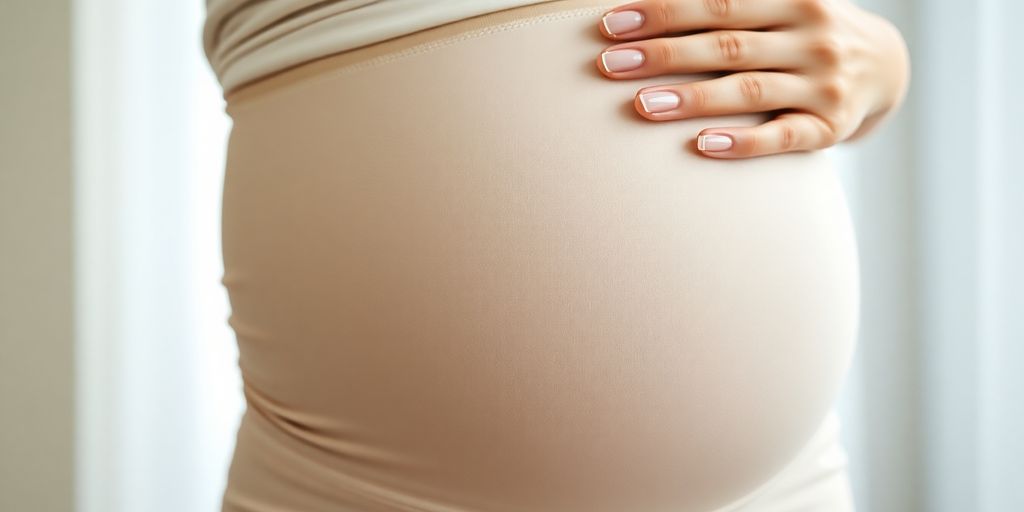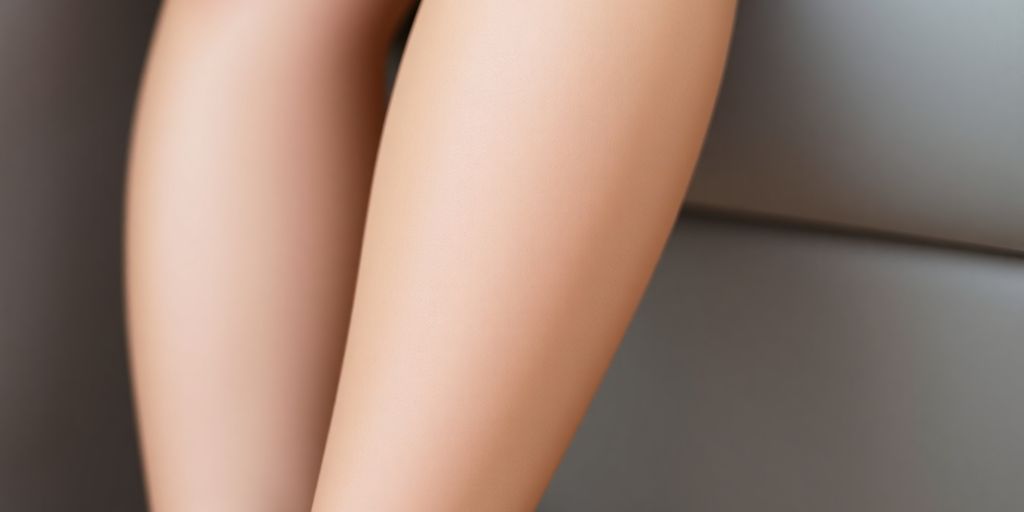So, you're wondering, "Is it good to wear compression postpartum?" It's a question a lot of new moms ask. After giving birth, your body goes through a ton of changes, and finding ways to feel more comfortable and support your recovery is a big deal. Compression garments, like belly wraps or binders, have become pretty popular for postpartum support. They're supposed to help with everything from pain to getting your core muscles back in shape. But how much of that is true? And what do you really need to know before you try one? We're going to break down what these garments do, when to use them, and what to watch out for, so you can make the best choice for your own recovery journey.
Key Takeaways
- Compression garments can help with pain and support your body as it heals after childbirth.
- They might make you feel more stable and help with posture, especially when you're moving around with your baby.
- It's important to start using compression at the right time and not wear it too long each day.
- Picking the right garment means looking at the material and making sure it fits well, not too tight.
- Always talk to your doctor or a healthcare provider before using compression to make sure it's right for you.
Understanding Postpartum Compression Garments
What Are Abdominal Belts?
So, what exactly are these postpartum compression things everyone's talking about? Well, abdominal belts, sometimes called postpartum belly wraps or binders, are basically supportive garments you wear around your stomach after giving birth. Their main job is to give your abdominal muscles and incision area (if you had a C-section) some compression and support. Think of it like a gentle hug for your tummy when it needs it most. They come in different shapes and sizes, from simple wraps to more structured garments with straps and closures. It's all about finding what feels right for you.
Why Is Compression Beneficial Postpartum?
Why bother with compression after having a baby? Turns out, there are a few good reasons.
- First off, it can help with pain. That gentle pressure can make moving around a bit easier and less ouch-inducing.
- It can also help with posture. Pregnancy does a number on your body, and compression can remind you to stand up straight, which is great when you're constantly lifting and carrying a newborn.
- Plus, some people find it helps with that general feeling of everything being a bit…loose after delivery. It's like having an extra layer of support while your body figures out its new normal. It can also provide pelvic floor support.
Postpartum recovery is a marathon, not a sprint. Compression garments can be a helpful tool, but they're not a magic fix. It's important to listen to your body and not push yourself too hard, too soon.
Types of Postpartum Compression
Okay, so you're thinking about trying compression. What are your options? There's more than one way to wrap a belly! Here's a quick rundown:
- Traditional Abdominal Binders: These are usually simple, wide bands of elastic material that you wrap around your midsection. They're adjustable with velcro closures, so you can customize the fit.
- Compression Leggings: These are like regular leggings, but with added compression in the abdominal area. They're great for everyday wear and can be more comfortable than a traditional binder for some people. They offer postpartum compression leggings benefits.
- Adjustable Support Garments: These are designed to provide targeted support to the pelvic floor and lower back while also compressing the abdominal area. They often come with adjustable straps for a customized fit.
Key Benefits of Postpartum Compression

Supporting Healing and Pain Relief
Postpartum compression garments can really make a difference in how you feel after giving birth. They provide gentle support to your abdominal muscles, which can be especially helpful if you had a C-section. This support can reduce strain on the incision site and ease discomfort as you move around. Many women find that wearing a compression garment helps them manage pain, making daily activities like caring for their baby a bit easier. It's like having an extra layer of support while your body is recovering.
Improving Posture and Mobility
Good posture is important, especially when you're constantly lifting and carrying a newborn. Postpartum compression can encourage better posture by supporting your lower back and abdominal area. This added stability can also improve your mobility, allowing you to move more freely and confidently. It can be a game-changer when you're trying to get back to your normal routine. Think of it as a gentle reminder to stand tall and engage your core muscles. Compression leggings can also help with mobility.
Aiding Pelvic Floor Recovery
Pregnancy and childbirth can put a lot of stress on your pelvic floor muscles. These muscles play a vital role in bladder control and overall pelvic health. Compression garments, especially those designed to provide targeted support, can help these muscles recover. While it's not a replacement for pelvic floor exercises, compression can offer additional support and alleviate issues like urinary incontinence that some women experience after giving birth. It's all about giving your body the extra help it needs to bounce back.
Using postpartum compression is not a magic bullet, but it can be a helpful tool in your recovery arsenal. It's important to listen to your body and consult with your healthcare provider to determine if compression is right for you and how to use it safely and effectively.
When to Start and How Long to Wear Compression

Optimal Timing for Initial Use
Okay, so you've got your compression garment ready. When do you actually start wearing it? It's a good question! Generally, if you had a vaginal delivery, you can start wearing compression pretty soon after giving birth – like, within the first few hours or days, depending on how you feel. If you had a C-section, it's super important to check with your doctor first. They'll want to make sure your incision is healing well before you start adding any kind of pressure. Listen to your body, too. If something feels off, don't push it.
Recommended Daily Wear Duration
How long should you actually wear the compression garment each day? It's not a one-size-fits-all answer. A good starting point is around 2-4 hours a day, and then you can gradually increase the time as you feel more comfortable. Don't go overboard right away. Think of it like breaking in a new pair of shoes – you don't want to wear them for 12 hours straight on day one! Some people find that wearing it for 8-12 hours a day works well, but it really depends on your individual recovery and comfort level. Make sure you're taking breaks, too. Your body needs time to breathe and recover without constant compression.
Listening to Your Body's Signals
This is probably the most important thing: pay attention to what your body is telling you. If you start feeling any pain, discomfort, or skin irritation, take the compression garment off. Don't try to tough it out. It's also important to make sure the garment isn't too tight. You should be able to breathe comfortably and move around without feeling restricted. Recovery is a marathon, not a sprint.
It's easy to get caught up in wanting to bounce back quickly after giving birth, but remember that your body has been through a lot. Be patient with yourself, and don't be afraid to adjust your compression routine as needed. If you're unsure about anything, always reach out to your doctor or a physical therapist. They can give you personalized advice and help you create a recovery plan that's right for you.
Choosing the Right Postpartum Compression
Finding the right postpartum compression garment can feel overwhelming with so many options available. It's not just about squeezing into something tight; it's about finding a balance of support, comfort, and functionality that aids your recovery. Let's break down what to consider.
Considering Material and Fit
The material of your compression garment is super important. You'll be wearing this thing for hours, so breathability is key. Look for fabrics like cotton blends or moisture-wicking synthetics to avoid overheating and irritation. Fit is equally crucial. Too tight, and you risk discomfort and potential circulation issues. Too loose, and you won't get the support you need. Measure yourself carefully and check the sizing charts provided by the manufacturer. Remember, your body is changing, so flexibility in sizing is a plus. If you are looking for healthy circulation during pregnancy, compression socks and leggings are a great option.
Adjustable Features for Progressive Healing
Adjustability is your friend! Postpartum bodies are in constant flux, and a garment that can adapt to those changes is invaluable. Look for features like multiple rows of hooks, Velcro closures, or adjustable straps. These allow you to customize the compression level as your swelling reduces and your body starts to regain its shape. This also means you won't have to buy multiple garments as you progress through your recovery.
Consulting Healthcare Providers for Recommendations
While online reviews and recommendations from other moms can be helpful, nothing beats personalized advice from a healthcare professional. Your doctor or midwife can assess your specific needs and recommend the best type of compression garment for your situation. They can also advise on the appropriate level of compression and how long to wear it each day. Don't hesitate to ask questions and voice any concerns you may have.
Getting professional guidance ensures you're making a safe and effective choice for your postpartum recovery. They can also rule out any contraindications based on your medical history or delivery experience.
Proper Application and Usage Techniques
Ensuring a Snug Yet Comfortable Fit
Getting the fit right is super important. You don't want your postpartum compression garment so tight that it's cutting off circulation or making you uncomfortable, but you also don't want it so loose that it's not doing anything. Think of it like a gentle hug, not a constricting squeeze. Start by following the sizing guide provided by the manufacturer. When you first put it on, make sure you can still breathe easily and move without feeling restricted. If you notice any digging or pinching, it's probably too tight. Some brands have adjustable closures, which can be a lifesaver as your body changes during the postpartum period.
Combining Compression with Light Activity
Once you've got your compression garment on, don't just sit around all day! Light activity can actually help with the healing process. Think gentle walks, stretching, or even just moving around the house. The compression can support your muscles as you move, making it easier to get back into your routine. Just be sure to listen to your body and not overdo it. If you start to feel pain or discomfort, stop and rest. It's all about finding a balance between support and movement.
Maintaining Hygiene and Garment Care
Keeping your compression garment clean is key for both your comfort and hygiene. You'll likely be wearing it for several hours each day, so it can easily pick up sweat and bacteria. Here's a simple routine to follow:
- Wash your garment regularly. Check the care label, but most can be hand-washed with mild soap.
- Avoid harsh detergents or bleach, as these can damage the fabric and elastic.
- Air dry your garment. Tumble drying can shrink or warp it.
- Consider having a second garment so you can always have a clean one ready to wear.
Wearing a clean compression garment not only feels better but also helps prevent skin irritation and infections. Make sure to check your skin regularly for any signs of redness or discomfort. If you notice anything unusual, stop wearing the garment and talk to your doctor.
Potential Risks and Important Considerations
While postpartum compression can be a great tool, it's not without potential downsides. It's important to be aware of these so you can use compression safely and effectively.
Avoiding Over-Tightening and Discomfort
One of the biggest mistakes people make is wearing their compression garments too tight. This can restrict circulation and cause discomfort, potentially leading to more serious issues. It's tempting to think tighter is better, but that's not the case. You should be able to breathe comfortably and move without feeling overly restricted. If you notice any pain, numbness, or tingling, loosen or remove the garment immediately. It's all about finding that sweet spot where you feel supported but not squeezed.
Preventing Over-Reliance on External Support
Compression garments are meant to support your body's natural recovery, not replace it. It's easy to become too reliant on the external support, which can hinder the strengthening of your own core and pelvic floor muscles. Think of it like a temporary crutch – helpful in the short term, but you eventually need to walk on your own. Focus on incorporating exercises to strengthen your core. Don't let the garment do all the work! Consider exercises to prepare the pelvic floor for birth.
Monitoring for Skin Irritation
Skin irritation is another potential issue, especially if you have sensitive skin or live in a warmer climate. Prolonged contact with synthetic materials can sometimes lead to rashes, itching, or even infections. To minimize this risk:
- Choose breathable, natural fabrics like cotton or bamboo.
- Wash your compression garment regularly with a gentle, fragrance-free detergent.
- Take breaks from wearing the garment to allow your skin to breathe.
- Make sure the garment is clean and dry before each use.
It's important to pay attention to how your skin reacts to the compression garment. If you notice any signs of irritation, discontinue use and consult with your healthcare provider. They can help you determine the cause of the irritation and recommend alternative solutions.
If you experience any skin irritation, stop using the garment immediately.
Integrating Compression into Your Recovery Plan
Complementing Physical Therapy
Postpartum recovery is a marathon, not a sprint, and compression garments can be a valuable tool alongside other therapies. If you're undergoing physical therapy, especially for diastasis recti or pelvic floor dysfunction, talk to your therapist about how compression can fit into your treatment plan. Compression can provide support during exercises and help maintain proper posture, potentially improving the effectiveness of your therapy sessions. It's all about working smarter, not harder, and using every resource available to you.
Supporting Daily Activities
Let's be real, life with a newborn is demanding. From breastfeeding to endless diaper changes, your body is constantly working. Wearing a postpartum compression garment can make these daily activities a little easier. It can provide support while you're lifting, bending, and moving around, helping to reduce strain on your muscles and joints. Think of it as an extra layer of support that allows you to focus on caring for your baby without being constantly reminded of discomfort.
Enhancing Overall Postpartum Well-being
Postpartum recovery isn't just about physical healing; it's also about mental and emotional well-being. Feeling supported and comfortable in your body can have a positive impact on your mood and confidence. While compression isn't a magic bullet, it can be a part of a holistic approach to postpartum care that includes proper nutrition, rest, and emotional support. It's about creating a recovery plan that addresses all aspects of your well-being, helping you feel like yourself again.
It's important to remember that everyone's postpartum journey is unique. What works for one person may not work for another. Listen to your body, consult with your healthcare provider, and be patient with yourself as you navigate this new chapter.
Conclusion
So, what's the deal with compression garments after having a baby? Well, it seems like they can really help. They offer support, make you feel more comfortable, and can even help with getting around. But, like with anything, it's not a one-size-fits-all thing. You gotta listen to your body, and definitely chat with your doctor before you start using one. They can tell you what's best for your situation. If you use them the right way, these garments can be a nice little helper on your path to feeling like yourself again after childbirth. Just remember, your recovery is a journey, and it's okay to get a little help along the way.
Frequently Asked Questions
When can I begin wearing a compression garment after childbirth?
Most women can start wearing a compression garment a few days to a week after giving birth, but always check with your doctor first. They can tell you what's right for your specific situation.
How long should I wear a compression garment each day?
It's usually suggested to wear the garment for 8 to 12 hours a day during the first few weeks of recovery. You can slowly wear it for longer as you get more comfortable. However, make sure to take breaks and avoid wearing it while you sleep so your body can rest naturally.
Should I wear my compression garment while sleeping?
It's generally not a good idea to wear a compression garment while you're sleeping. Your body needs to rest without any squeezing during the night.
What kind of compression garment is best for postpartum recovery?
Look for a compression garment made from soft, stretchy materials that give gentle support without feeling too tight. Garments with adjustable features are also helpful because your body will change as you heal.
What should I do if my compression garment causes discomfort?
If you feel more pain, discomfort, or notice skin irritation while wearing the garment, take it off right away. Then, talk to your doctor or healthcare provider for advice.
How do I take care of my compression garment?
Most compression garments can be cleaned by hand and air-dried. Always follow the care instructions from the maker to keep the material in good shape.




Share:
Do I Need Postpartum Compression? A Guide for New Mothers
Understanding and Utilizing Compression Wraps for Lymphedema Management